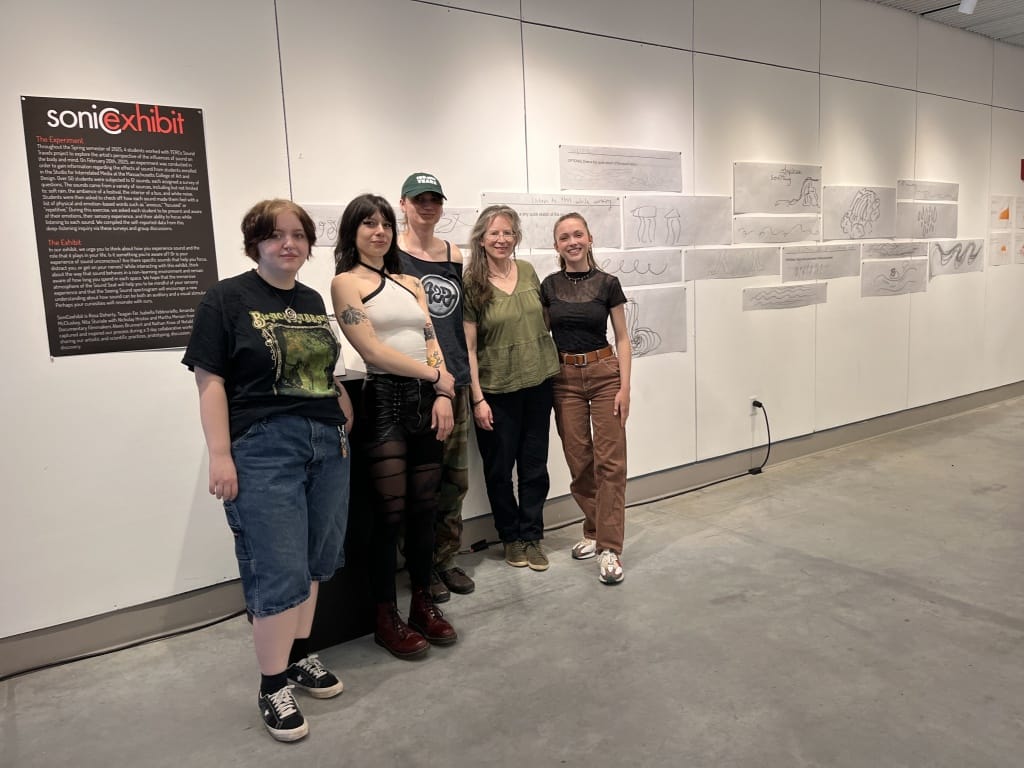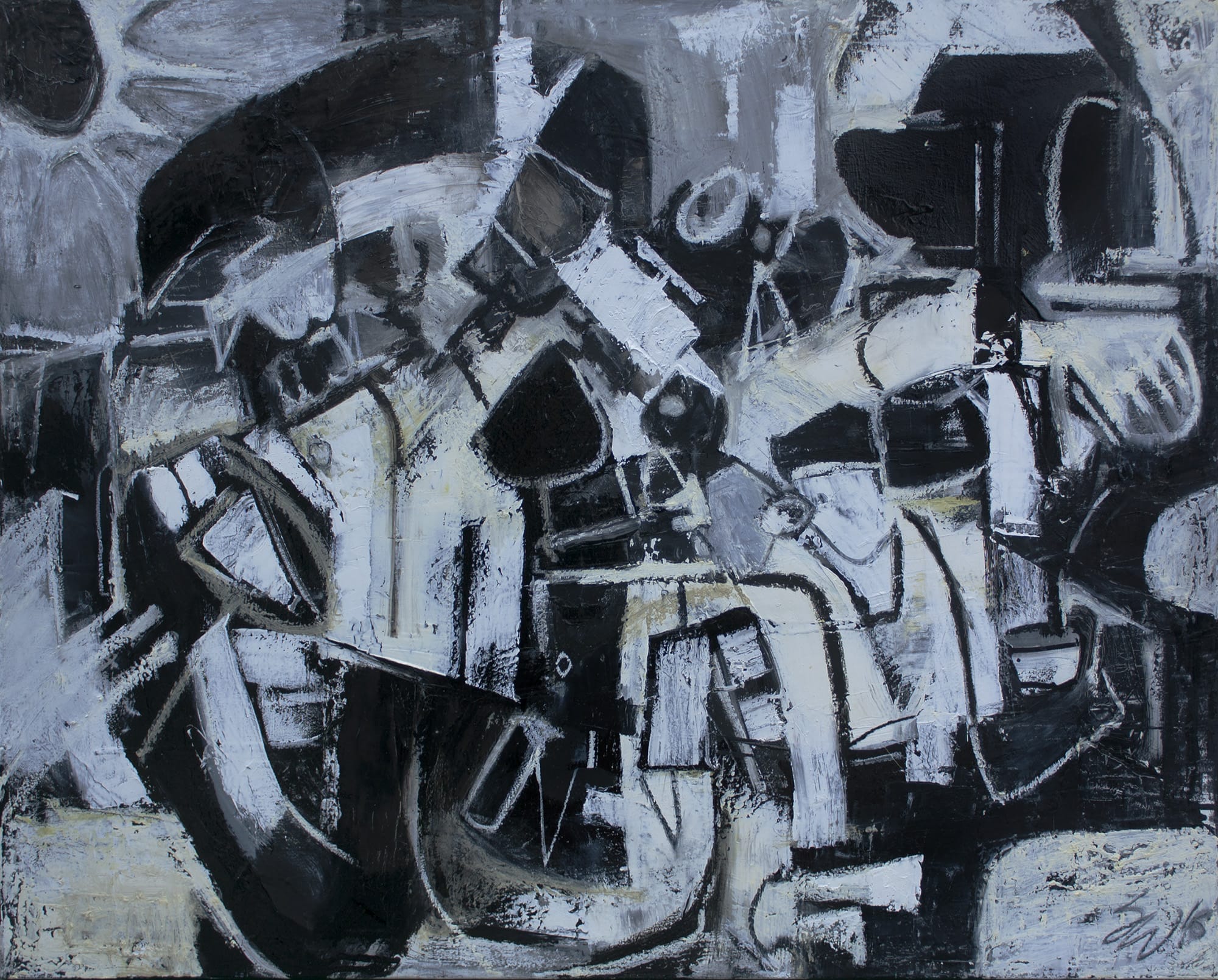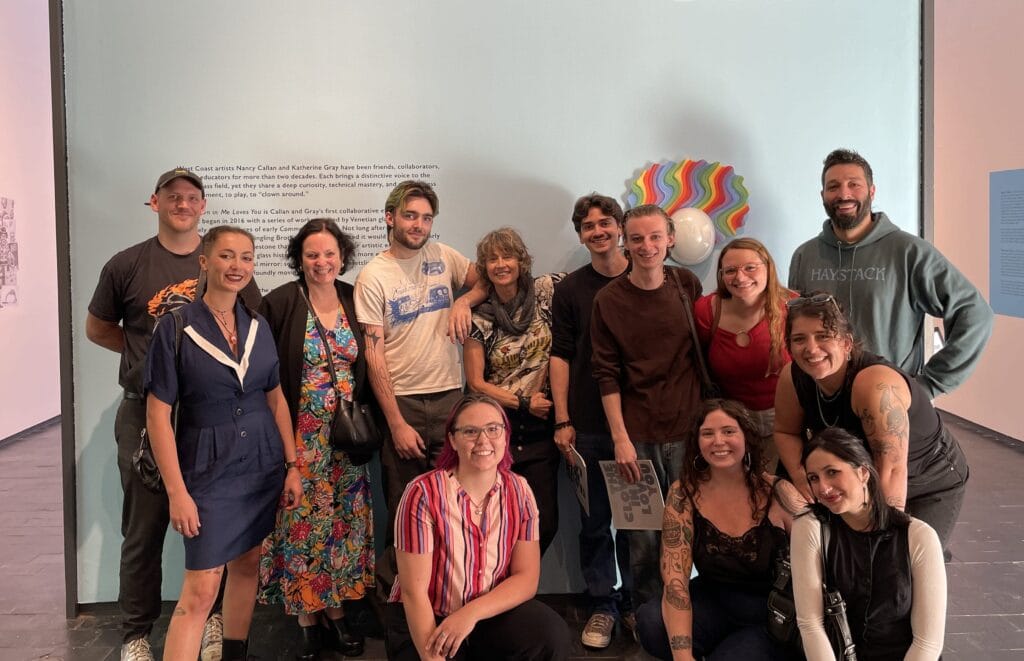MassArt Students and Alumni Combine Forces to Tune Into the Science of Sound
MassArt and TERC bring creative installations together with research on soundscapes and learning.
View story
MassArt alumnus Sean Walker, BFA ’96, has turned his passion for art and the night sky into a career that now includes an asteroid named in his honor.

MassArt Alumnus and Astrophotographer, Sean Walker, BFA '96
Written by Rachael Dubinsky
MassArt alumnus and astrophotographer, Sean Walker, BFA ‘96 (Painting), has always been fascinated by the night sky. This wonderment has evolved into a career that bridges the worlds of art, science, and storytelling. Recently, Sean had an asteroid officially named after him by the International Astronomical Union, honoring his lasting accomplishments as an artist and astrophotographer.
We caught up with Sean, an associate editor at Sky & Telescope Magazine, to learn how his foundation in visual arts led to a life spent capturing the cosmos.
How did you first get interested in astrophotography?
I have always been drawn to astronomy. My mother had a telescope and would show my brothers and me the planets when we were kids growing up in the 1970s, and we watched Carl Sagan’s COSMOS in the early 1980’s.
For me, the real turning point came in 1994 when comet Shoemaker-Levy 9 collided with Jupiter. Watching those images unfold just blew my mind. It made me really want to learn how to take pictures of objects in the night sky, so I bought a book and taught myself how to shoot the stars. The wisps of nebulosity in our Milky Way remind me a bit of action painting, but on a celestial scale.
What types of art do you draw inspiration from?
It depends on what I’m working on, but I’ve always had a deep admiration for abstract expressionists like de Kooning and Clyfford Still. At the same time, I’m really drawn to photographers like Ansel Adams, Man Ray, and even E.E. Barnard. When focusing on the landscape, I often consider the light in Edward Hopper works.
What do you do as an associate editor of Sky & Telescope Magazine?
I wear a lot of hats. I assign and edit articles from contributing authors, write pieces myself—especially on astrophotography techniques—and manage our equipment reviews. I also get to lead astronomical tours to view events like total solar eclipses. I’ve had the privilege of seeing and photographing three total eclipses so far.

Photograph of a total solar eclipse. Photo by Sean Walker
How has your MassArt experience helped to shape your career path?
MassArt taught me how to chart my own course—both in life and in my career. It gave me the tools to recognize opportunities when they came along and the confidence to pursue them.
I actually started out at Montserrat College of Art in Beverly, but transferred to MassArt because I felt the program was a better fit for my interests and where I wanted to go creatively.
While I was at MassArt, I had the chance to study with Jon Imber—an artist I deeply admired—and Ben Blum, who encouraged my growing interest in astronomy. I worked my way through school in various part-time jobs in the area including working at the photo lab Ferranti-Dege in Harvard Square, and also taking slides of fellow artists’ work for their portfolios. I also worked at the Audio/Visual department at Harvard University’s Science Center, where I would shoot 35-mm slides of the pages of Sky & Telescope for the lectures by historian of astronomy Owen Gingerich.

Eclipse Chaser, Oil on Canvas. Courtesy of Sean Walker.

Image courtesy of Sean Walker.
Tell us about the MDW Sky Survey.
The MDW Sky Survey (mdwskysurvey.org) is a project I co-founded with my friends David Mittelman and Dennis di Cicco. Our goal was to create a detailed map of the entire sky in hydrogen-alpha—this very specific red wavelength where neutral hydrogen gas glows. That gas is one of the building blocks of stars and galaxies, so it’s foundational to understanding how the universe evolves.
We realized there isn’t a good map of this faint nebulosity freely available to the public, so we set out to make one. MDW comes from our last name initials. The project aims to image the sky at fairly high resolution, dividing up the sky into 4,120 individual fields. As we accumulated images, I stitched them together and published large mosaics of these nebulous areas on our website. These images gained the attention of the professional astronomy community, and has since led to several discoveries of previously unknown objects in our galaxy. We’ve in recent years partnered with Columbia University’s Astronomy department to publish papers and share our data more broadly. We began the project in May 2016, and completed some 80% of the sky by late 2022. Around that time, we shipped a telescope to Chile in order to image the part of the sky that never rises above the horizon in the Northern Hemisphere. We are nearing completion of the main data collection and intend to assemble the images into a massive, high-resolution image of the entire sky, which will likely be incorporated into many planetarium apps.
What does it feel like to have an asteroid named after you?
It’s pretty surreal to say I have an asteroid officially named after me – 13623 Seanwalker – a hunk of rock that will far outlive me. It’s like a sort of immortality, in a way. Only about 15,000 asteroids are named so far. My colleague Dennis di Cicco, a pioneer of astrophotography techniques himself, discovered the asteroid back in the mid-1990s. It certainly helps to know someone who has discovered these space rocks.
How does one build their own observatory?
The “easiest” version is like building a big shed or studio, with the added complexity of having to make the roof roll off in order to permit a permanently-mounted telescope to see the sky. Think big wheels, iron rails, and winches. When I built mine a few years ago, the building inspector was rather baffled as to how I was going to accomplish it (“How is the roof going to stay on?”) but in the end he signed off on it. He was also suspicious as to why I didn’t want any windows (it’s so the neighbor’s porch light isn’t shining on the scope or in my eyes when using the scope). The sign on the door of mine greets visitors with “Wilkommen in der Dunkelheit” which means welcome to the darkness in German.
What advice would you give to students today who are hoping to carve out their own space in a creative career?
Stay curious. Stay focused. And don’t be afraid to try new things.
MassArt and TERC bring creative installations together with research on soundscapes and learning.
View story
The MassArt community came together this Fall at the public opening of The Clown in Me Loves You at the Fuller Craft Museum in Brockton, featuring the work of Alumna Nancy Callan BFA ‘96 Glass.
View story